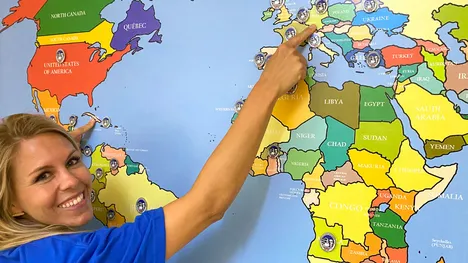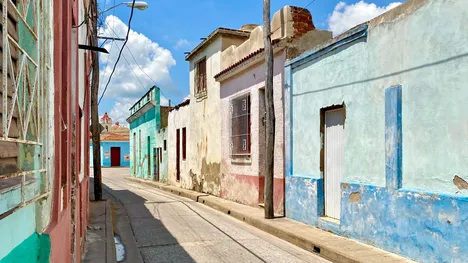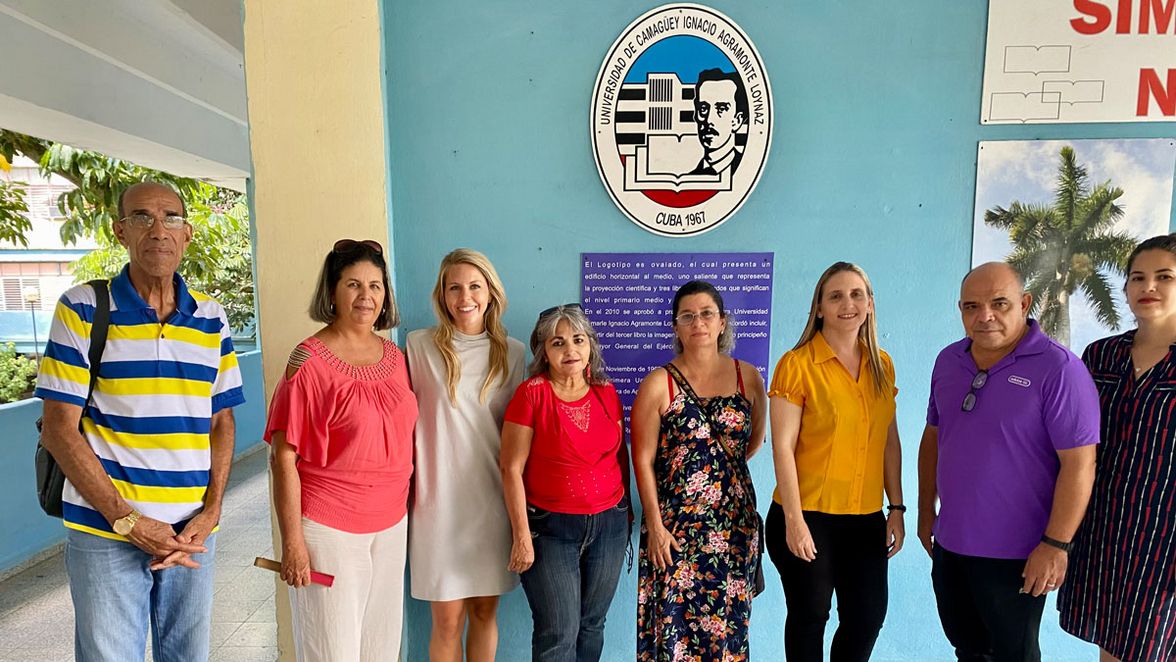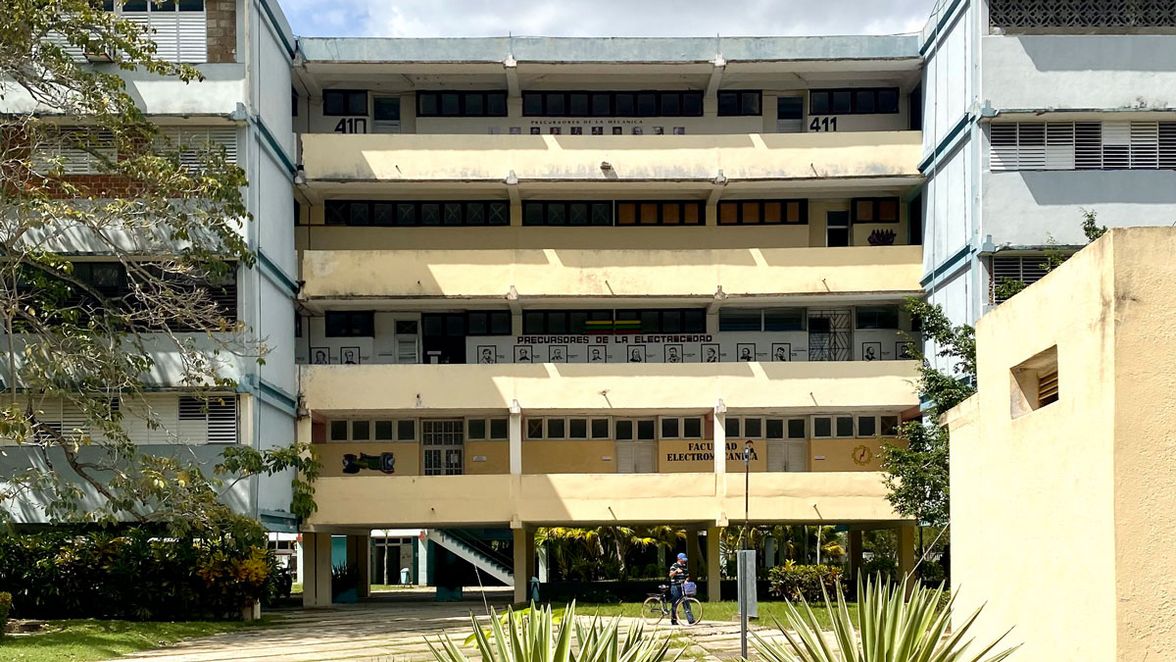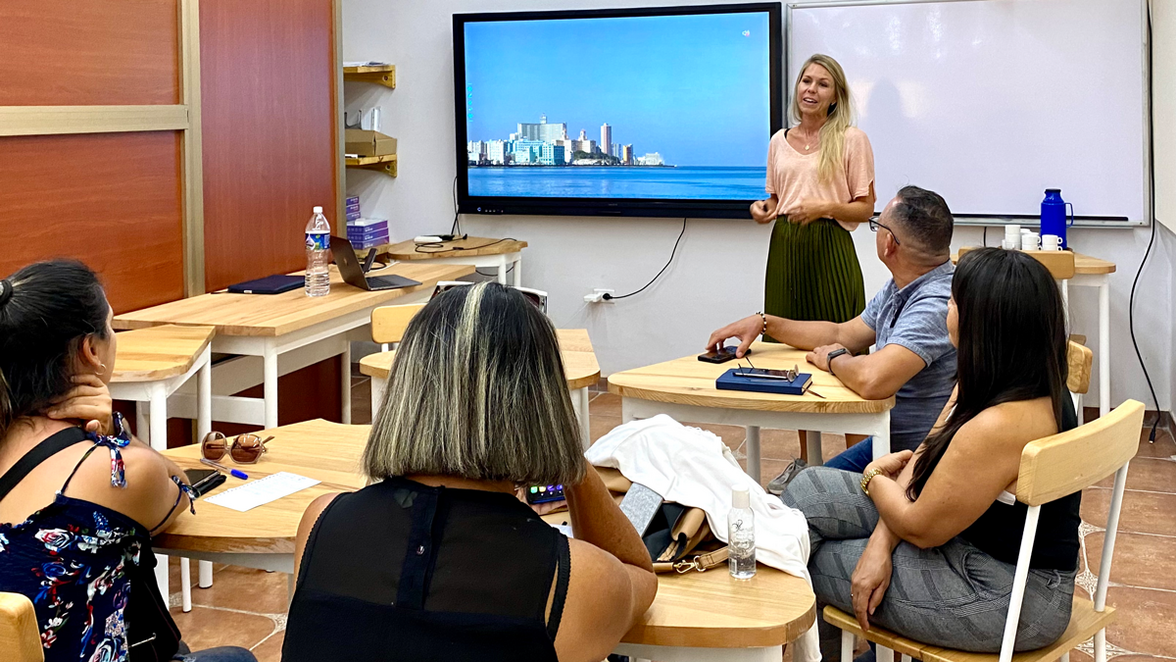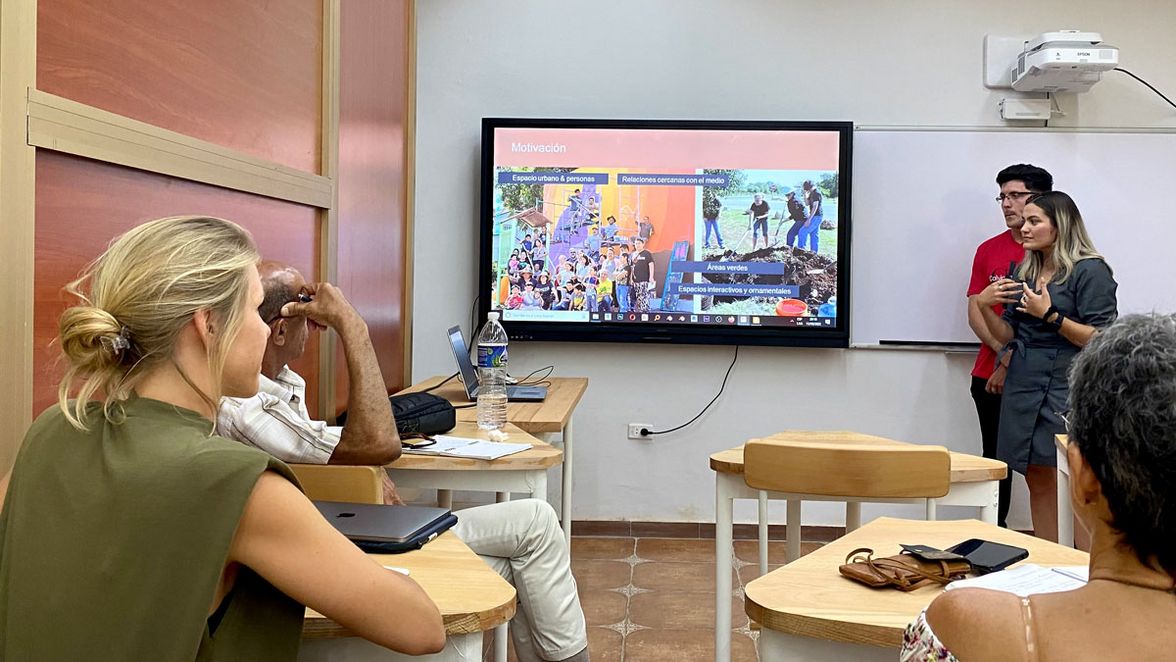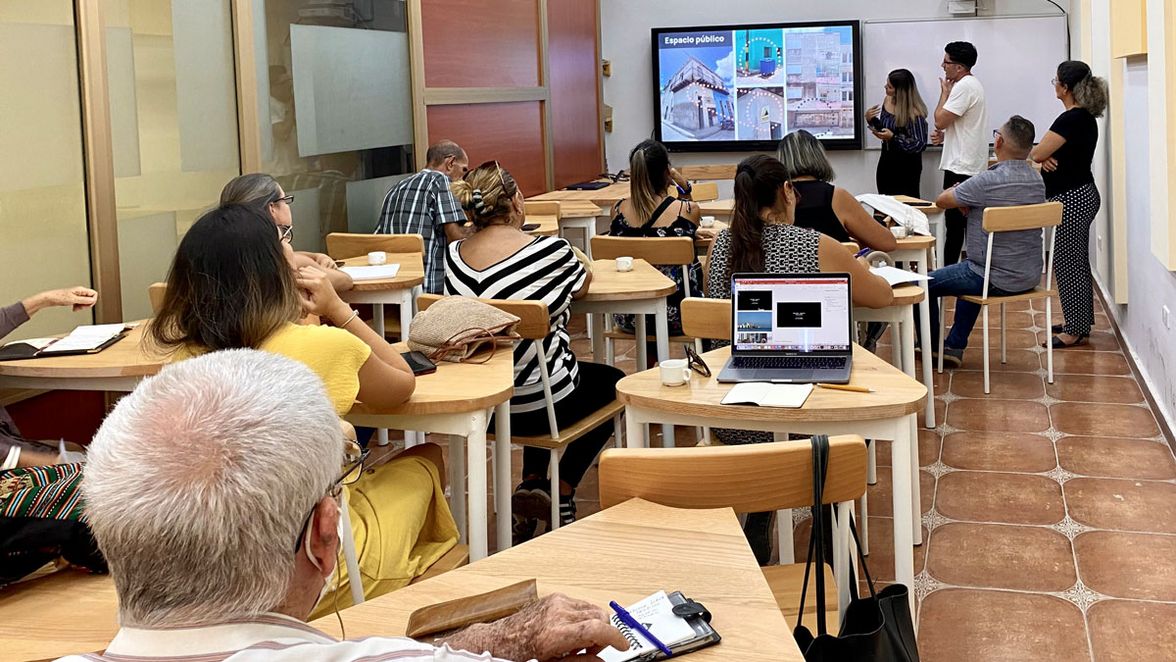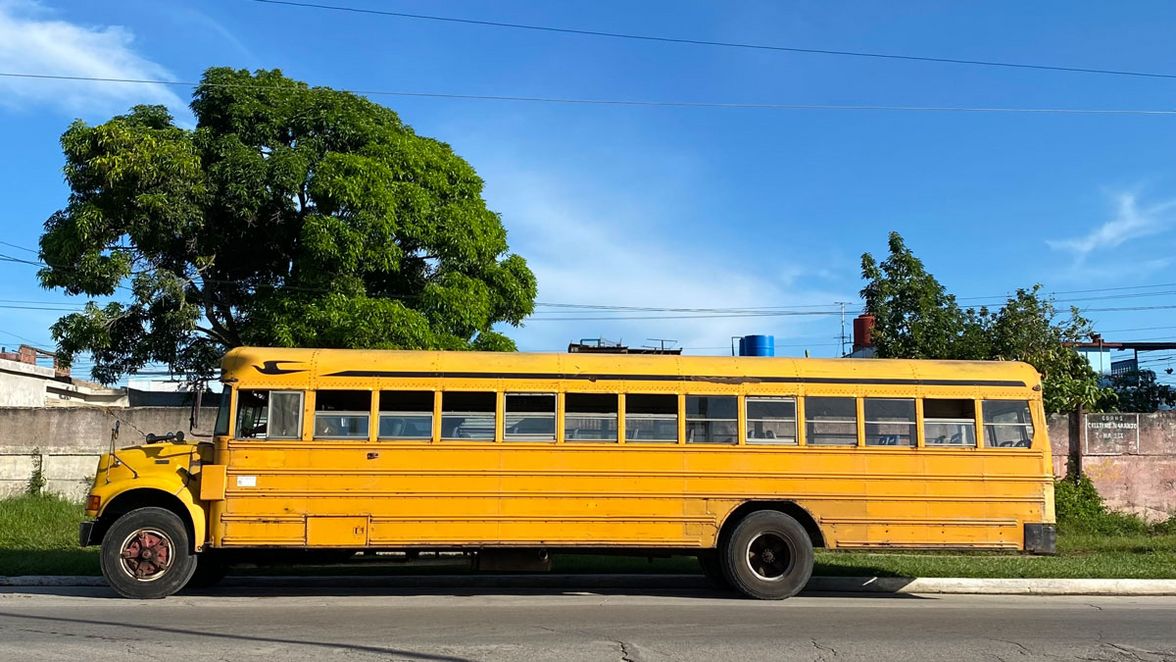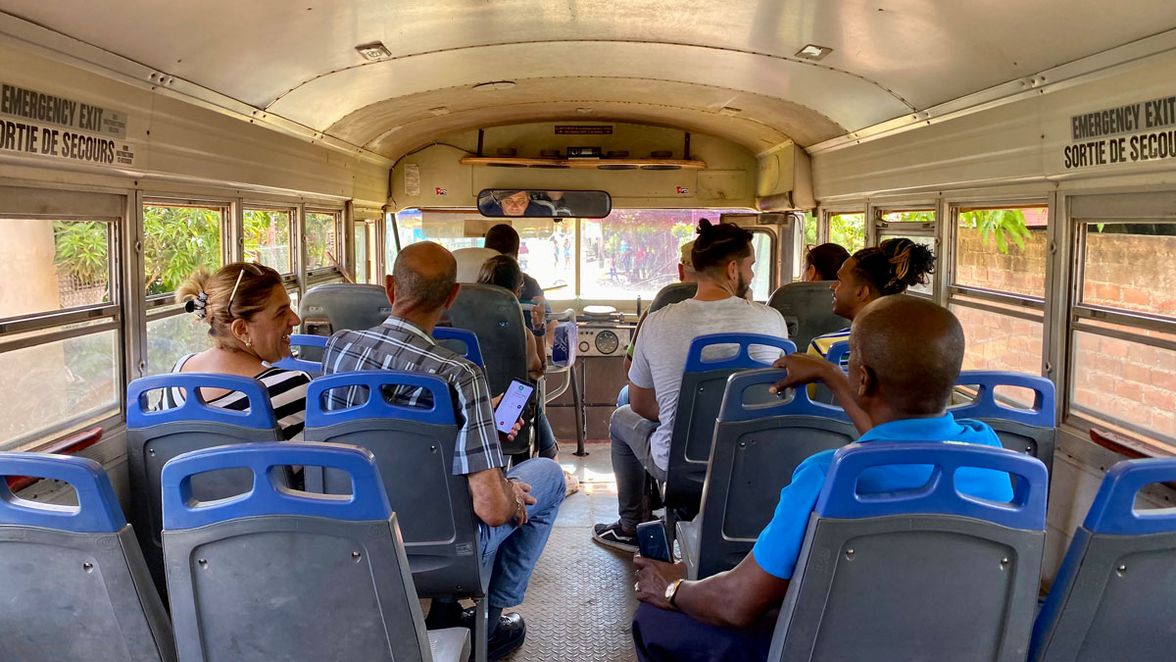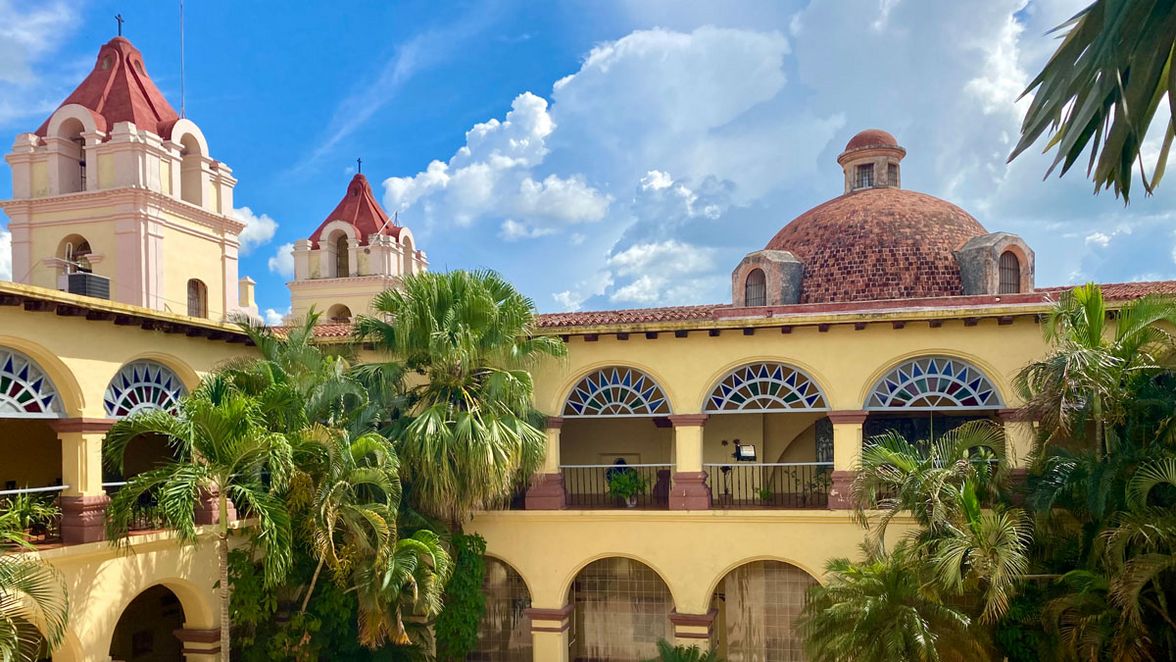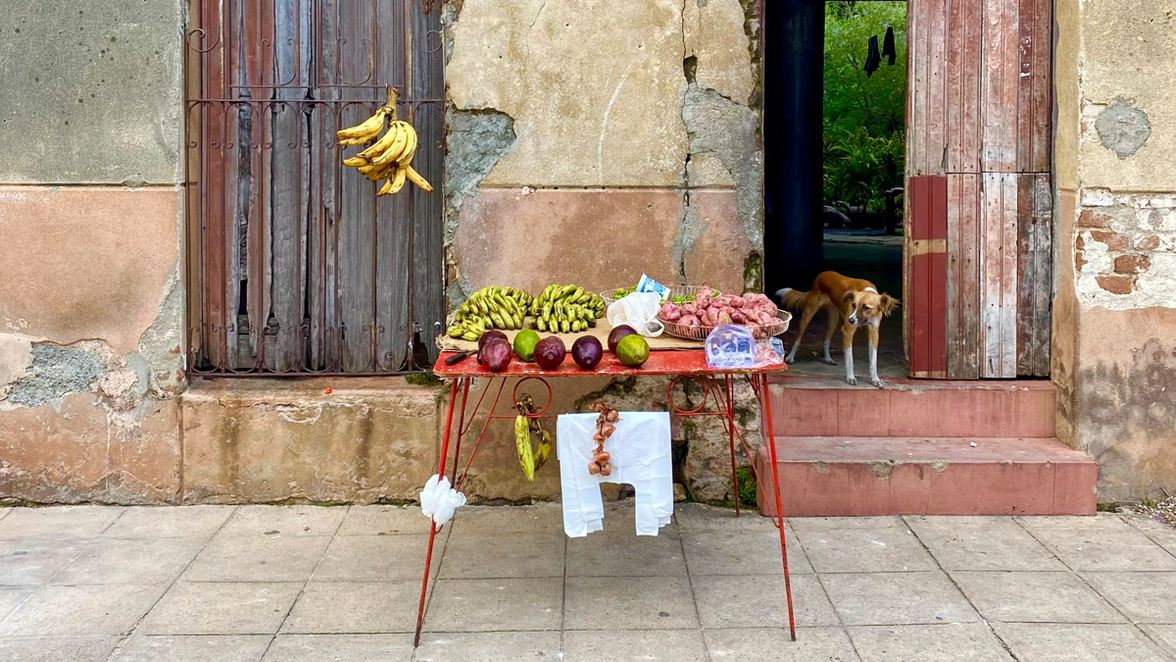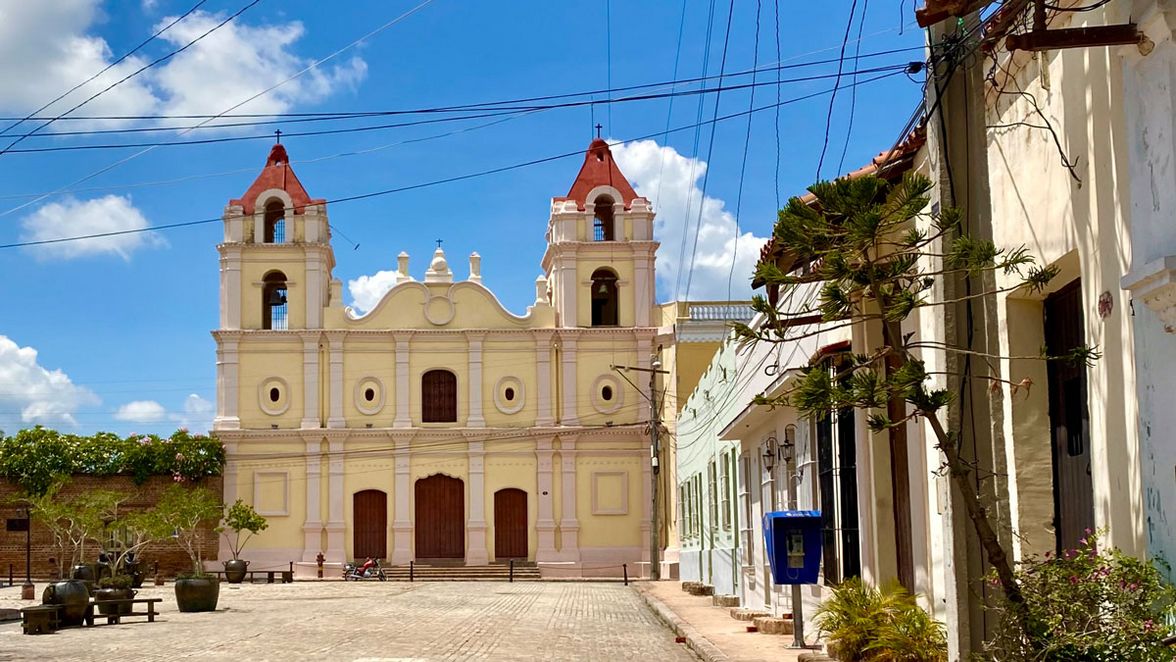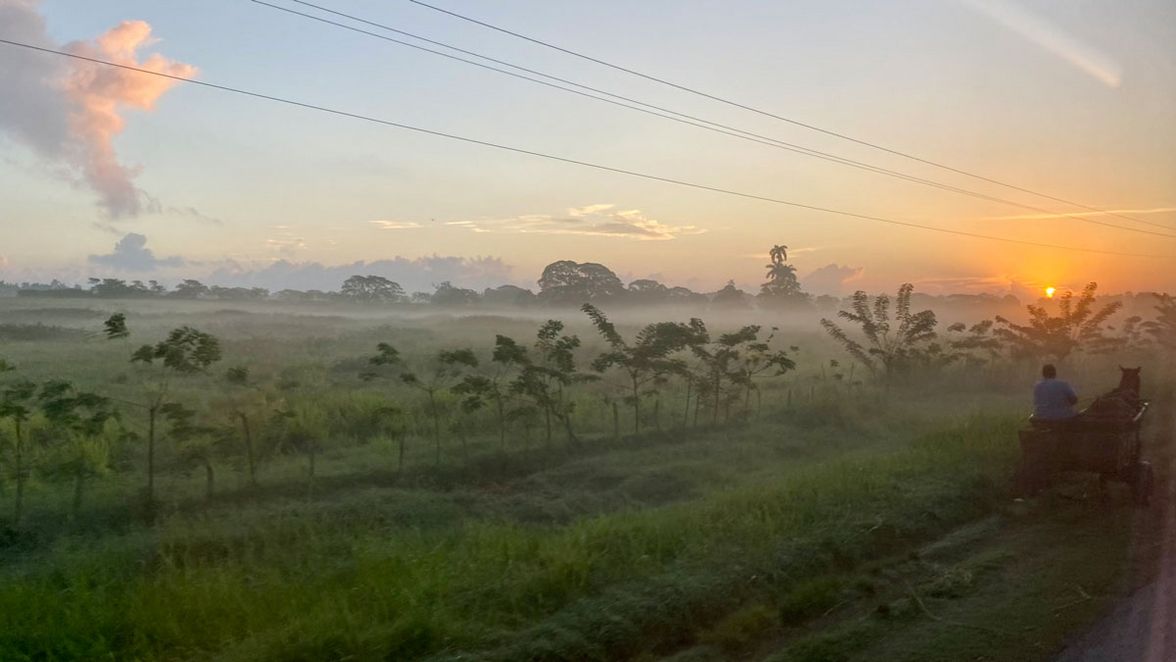Barbara Schudok works at the Chair of Architectural Design and Participation at the TUM School of Engineering and Design under the direction of Prof. Francis Kéré. The chair places particular emphasis on the use of local materials. The TUM Without Borders funding program funded a workshop on "Building with Local Resources" at the University of Camagüey. In her report, Barbara Schudok provides insights into the course week at the partner university and shares her impressions gathered during her stay in Cuba.
Through the TUM Without Borders program, I had the opportunity to visit the Faculty of Architecture at the University of Camagüey in Cuba and teach there. In Munich, I work at the Chair of Architectural Design and Participation under the leadership of Prof. Francis Kéré, who is renowned for his innovative and sustainable building projects. His architecture combines traditional construction methods with modern approaches, utilizing locally available materials. His work puts a special focus on social and ecological sustainability, creating buildings that are carefully tailored to the needs of communities and the local climate. These focuses are also central to our teaching and research at the chair.
These themes are highly relevant in Cuba, as the decades-long trade embargo has significantly limited the availability of resources, particularly building materials. This led to the idea of initiating an exchange between TUM and the University of Camagüey within the framework of a course, to share knowledge and experiences and to adapt these building principles to the Cuban context.
From first contact to academic cooperation: A personal research journey through Cuba's transformation
I first made connections in Cuba in 2014 during the Caribbean Winter School, an international workshop in Havana in which I participated as a student. Following this, I delved into the country's challenges and their impact on buildings and residents in my master's thesis, which ultimately led to my ongoing dissertation on spatial transformation processes in the historic neighborhood of Centro Habana.
During each of my research visits, I had the chance to observe the continuous changes in the country. I spoke with residents about their living conditions and perspectives to gradually gain a deeper understanding of Cuba's complex reality. I experienced the country during hopeful times under Obama's administration, as well as in the challenging post-pandemic years that marked a severe low point. These extensive experiences laid the foundation and provided the motivation to develop an academic partnership.
“No hay…” – Omnipresent resource shortage in Camagüey
The city of Camagüey is considered a colonial gem, characterized by a maze of narrow, winding streets and single-story buildings. However, today, the city faces significant challenges: many historic buildings are in a concerning state or already uninhabitable, resulting in an acute housing shortage. Decades of economic embargoes, adverse circumstances, and the natural end of the life cycle of many buildings have left visible marks, both in Camagüey and throughout the country.
Limited financial resources and the high cost of building materials make maintenance and restoration extremely difficult, while essential resources for new construction are lacking. Conversations with residents reveal the severity of the problem, often summed up in the phrase "no hay…" – "we don't have…". Against this backdrop, Camagüey urgently seeks solutions to create housing, effectively utilize available local resources, and construct buildings adapted to the tropical climate. Particular emphasis is placed on using clay as a building material.
A productive week dedicated to sustainable building with local resources
Initially, I had planned an intensive course for students at the University of Camagüey, where participants would work in groups to develop a short design project. However, the enthusiasm for the course exceeded my expectations: in addition to students, university faculty and staff from the Office of the City Historian were so interested in the topic that my Cuban team members and I decided to adapt the format on the spot. Thus, the course evolved into a dynamic workshop with many engaged participants.
Within this framework, I presented Kéré's approach, and we discussed how it could be applied to the Cuban context. Each evening, I searched my personal archive for relevant materials and photos that aligned with the day's discussions and would be meaningful for the next day's exchange. The enthusiasm of everyone involved and the collaboration among different groups working together to find solutions were incredibly inspiring, offering valuable learning experiences for all participants.
One of the biggest challenges in Cuba was the electricity shortage. Power was available only in six-hour intervals, usually from 11 a.m. to 5 p.m. and from midnight to 6 a.m., which required careful planning. Presentations had to be scheduled within these time slots, though unexpected changes sometimes occurred. To ensure that participants could return home while it was still light and had time to cook, we finished the course early, before the city was plunged into complete darkness around 7 p.m., with only flashlights for illumination. Each evening, I sat in the dark by the open window in a rocking chair, hoping my laptop's battery would last and for a refreshing breeze in the tropical night. In this setting, I worked on my presentations and refined the course concept.
During the workshop, we took walking tours of the city to understand the scope of urban challenges and gain a comprehensive view of the current situation. Additionally, we visited a brick production site and a construction area where prototype houses were being built. To make the discussions accessible to a broader audience and engage the community, I concluded my stay in Camagüey with a public lecture in the town hall.
Valuable experiences and lasting impressions
My stay in Camagüey was both professionally and personally enriching and inspiring. I was particularly impressed by the commitment of the participants, who, despite challenges such as power outages and unreliable public transportation, actively engaged in the exchange. The packed lecture hall underscored the community's motivation to seek solutions and drive change. The time spent on-site laid the foundation for future collaboration. All those involved showed great interest in continuing this inspiring exchange. Discussions with the university administration, particularly with the dean of the Faculty of Architecture and the International Center, further contributed to developing this partnership.
I learned to adapt flexibly to unexpected situations—whether due to power shortages, the need to make last-minute and fundamental adjustments to a long-prepared plan, or the surprising opportunity to give my first public lecture in Spanish so that all interested attendees could follow along. My time in Camagüey was an extremely instructive experience. My special thanks go to Prof. Dr. Riselda Guzmán and Prof. Dr. Rubén Bancroft for the opportunity to have an inspiring exchange and for their warm hospitality.
